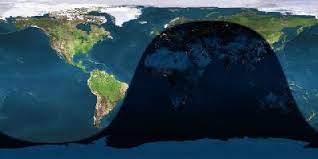
Learning Gray-line Propagation
Grey line or gray line propagation is a form of radio signal propagation that provides surprisingly long distance radio communications at dawn and dusk sometimes when other forms of ionospheric propagation may not be expected to provide signal paths of these distances.
Grey line propagation is only present around dawn and dusk and therefore it cannot be used to support global radio communications at any time. Accordingly it tends to be used chiefly by radio amateurs and a few other users who can accommodate the timing and other limitations of its availability.
Grey line propagation basics
For grey line propagation signals travel along the grey or twilight zone between night and day. This is area where night and day meet and it is also known as the terminator. In this region signals on some frequencies are attenuated much less than might normally be experienced and as a result signals can be received at surprisingly high levels over very long distances – even from the other side of the globe.
The improved propagation conditions around the grey line are most noticeable primarily on the lower frequency bands in the HF portion of the spectrum where the level of ionisation in the D layer has a much greater effect on signals that on those frequencies higher up. See Video Below For Better Explanation:

